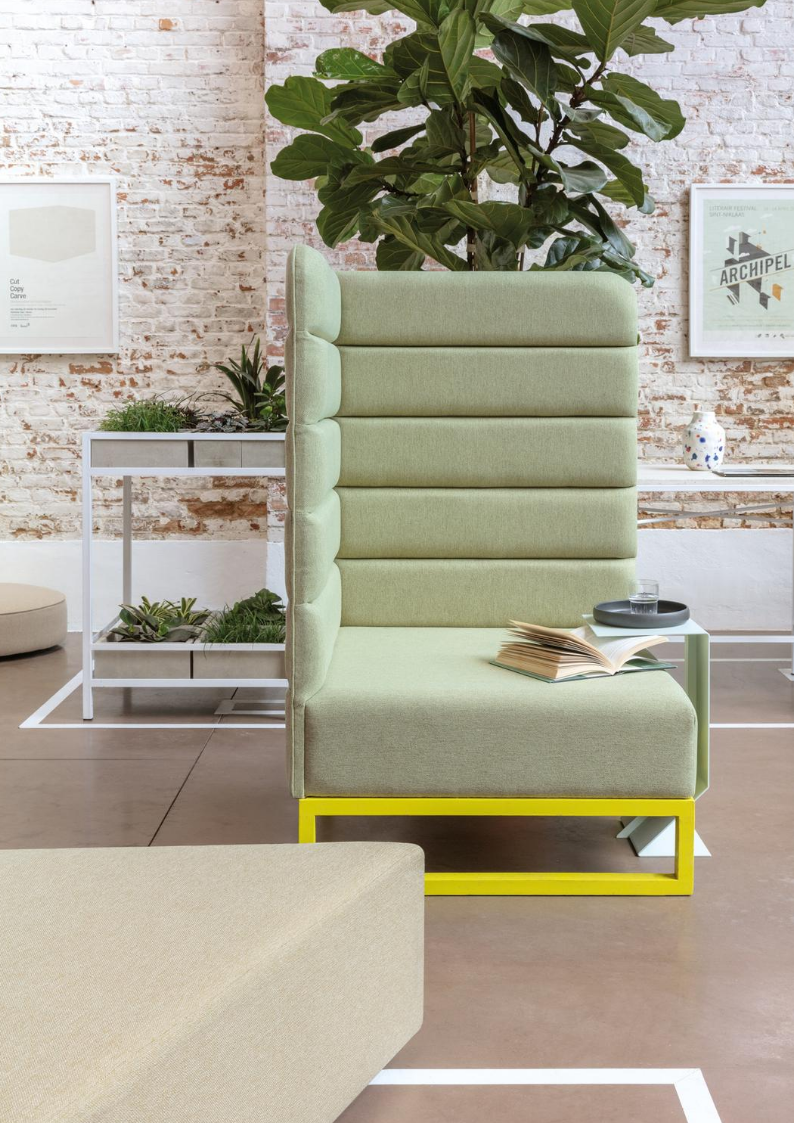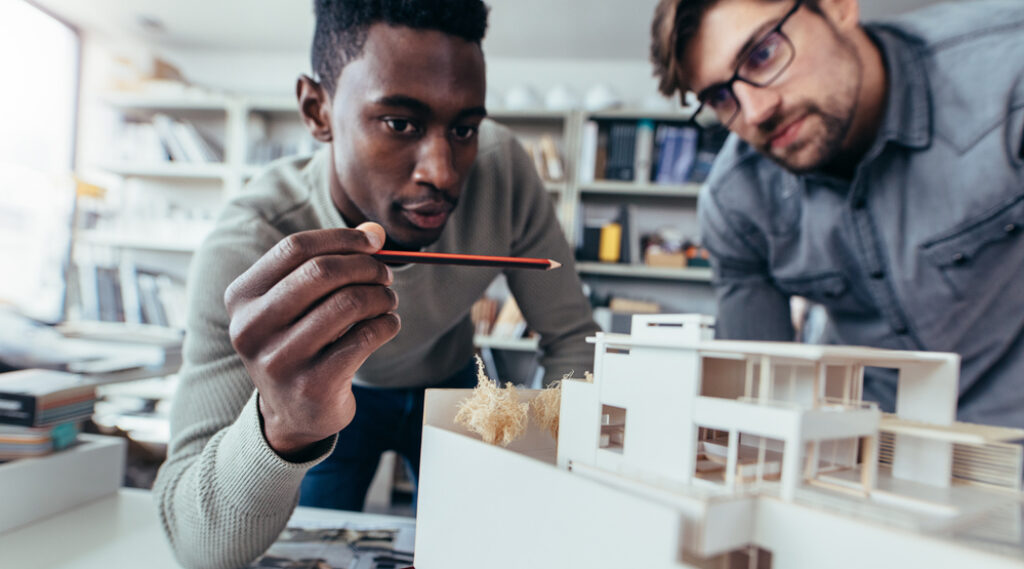COVID-19 shapes the open-plan office of the future
This post is part of our series focused on the seismic shift in work systems, traditional office typology, and more. Start at the beginning with an overview.
Months into various lockdown measures, the novelty of remote work is fading with millions switching from ergonomic office setups to a spare chair at the dining room table, and meetings all take place via video.
Even a part-time return to the office is being looked forward to by many, but how will that work, exactly?
How does the Coronavirus impact the open-plan office?
The office itself certainly isn’t dead, but the concept of the open-plan office very well could be, for a number of different factors we touch on in this article.
Read: Office design is transforming in the new now
Of course, the primary focus in the layout of communal spaces is employee health and wellbeing.
With all health regulations taken into account, the situation in offices then becomes hazy, especially because the concept of the open-plan office faces problems simply because social distancing rules mean that not all employees can still be accommodated in the available space.

Returning to the office
With remote work being enforced in many areas of the world, business owners are facing a dilemma we never saw coming: office buildings are empty everywhere.
Nobody in the design world is entirely sure as to what the future of open-plan offices looks like, but in this post, we're taking an educated estimate.
Open-plan offices face fresh issues in 2020
Journalists and thinkers alike have been writing about the disadvantages of offices with open floor plans for years.
Once vaunted as a collaboration-booster (in the 1950s) and a more social alternative to the cubicle, the death knell for this way of working is sounding: social distancing.
In fact, we've mentioned this here and there on this blog in the past.
There’s less face to face communication in open plan offices, according to a Harvard study entitled The impact of the ‘open’ workspace on human collaboration. Yes, that’s right, apparently open plan offices do the exact opposite of what they were intended to do: they shut down communication. - Read Interior design matters in the workplace: here’s why
Now, though, the very idea of the open-plan office has a whole slew of different challenges on its plate than it had half a year ago in 2019.
Key questions spinning through the architecture and interior design world right now look something like this:
- What should business owners do now then with their large, mostly empty, offices?
- How can office space, in general, be repurposed?
- How can the open-plan office be re-imagined to deal with a post-corona world?
- Will we ever really work ‘together’ again?
“People’s expectation about their buildings will change,” Joe Allen, the director of Harvard’s Healthy Buildings Program says; “The next time we go back to our offices, we’ll think about it differently.”
Allen also reminds office designers that people need personal space, natural lighting, and enough quiet to concentrate in order to be fully productive.
The layout design of office space has suddenly become much more demanding.
COVID-19 brings important responsibilities for front office staff and reception staff
Let's begin at the beginning, the entrance to the offices themselves. It's important to acknowledge the role of office employees themselves in stopping the spread of the virus. They have a crucial role to play in stopping the spread of the germs in the open-plan office.

It's because of this that front office staff and office managers are facing complicated challenges in greeting guests and other employees in reception and waiting areas.
We need to be even stricter when it comes to protecting against the spread of viruses and other germs. Did you know we have an antimicrobial range called FibreGuard Pro?
Essential businesses and health facilities have been leading the way with solutions, introducing new ways of working and navigating spaces through staggered arrival times, directing office foot traffic, staging areas for elevators, and temperature checks at work.
Read Our deep commitment to social responsibility
These are the strategies that managers of open-plan offices need to be studying. The same goes for designers of future office buildings.
We as a company have led by example and had already taken proactive action to both protect our employees as well as the overall wellbeing of our wider communities. Watch the video in the local news.
Office culture and office architecture combine
Navigation of space isn't the only way companies are innovating when it comes to their open-plan office layouts.
"In the long run", Amol Sarva, CEO of office interior design firm Knotel says, "getting back to work is not just about floor plans, but about a dramatic shift in the office life as we know it." - National Geographic
Open-plan layouts need to reflect this shift in culture: but that's not all. Many experts hope the pandemic will spur employers to take steps to make offices architecturally healthier too.
Healthy building refers to an emerging area of interest that supports the physical, psychological, and social health and well-being of people in buildings and the built environment. -"Buildings and Health
Cushman & Wakefield, a global commercial real estate services firm, carried out a wide-ranging report on the future of the workplace post-corona.
One of the points touched on in the report is that an emerging emphasis for 2020 is on the materials used in public spaces, health facilities and commercial spaces such as offices and retail spaces.
The Coronavirus has forced many built commercial spaces around the world to pull themselves up by their bootstraps and examine whether their architectural structures are ‘healthy’ or not. - How coworking spaces are finding new definitions for 'community'
Because of COVID-19, we are learning, as a planet, that the fastest way to build (or sustain!) a healthy economy is through ensuring the health of the workforce through the health of their built environment.
Public health and a healthy economy need to become inextricably linked in order for us to move forward. Re-imagination of open-plan offices is an important step to take for this to become a reality.
How is your office space changing in 2020?
Join the conversation over on Instagram! We'd love to hear from you.
